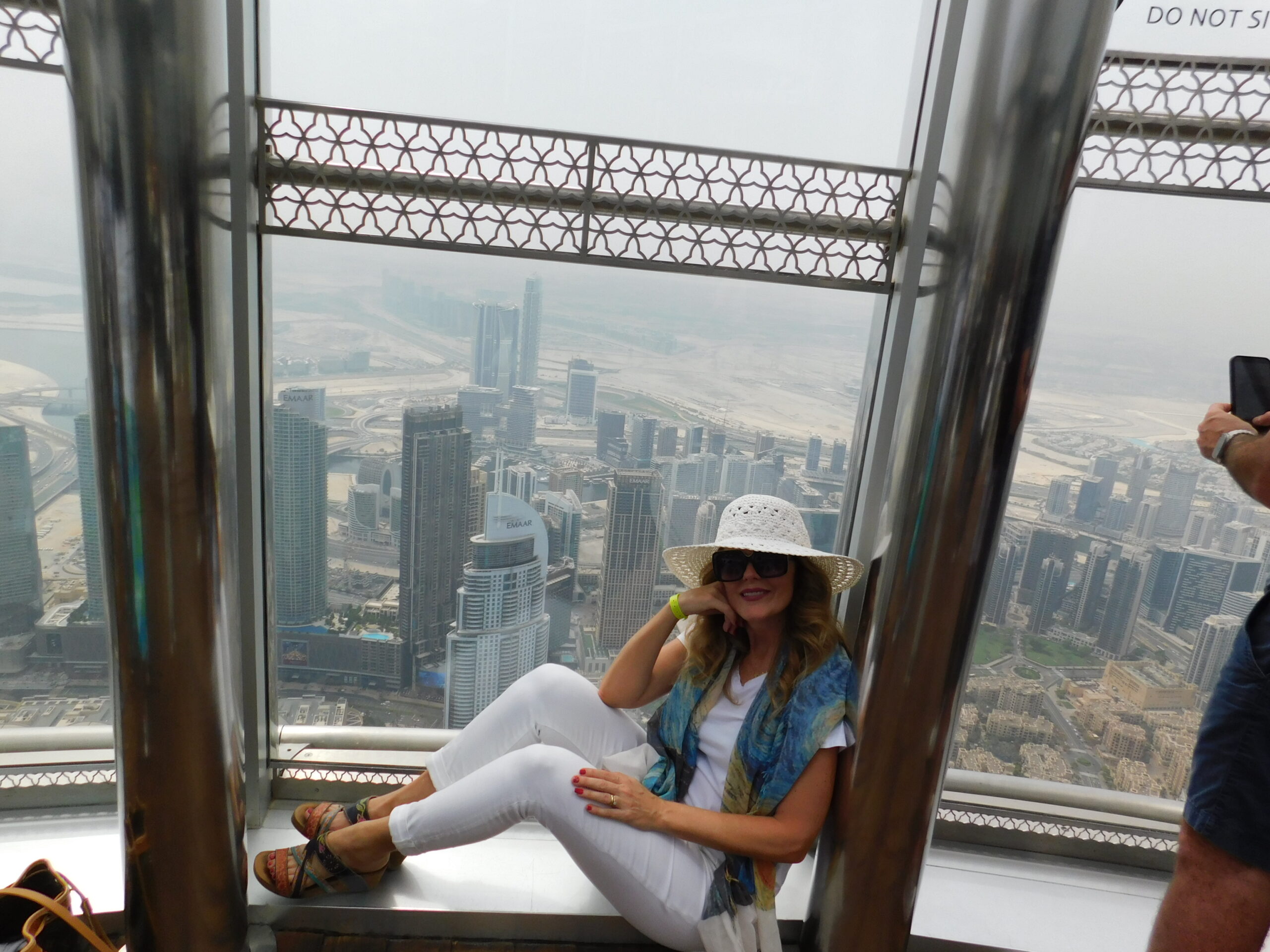
As currently the tallest building in the world, The Burj Khalifa stands as a testament to human ingenuity and determination, defying the limits of architecture and engineering. Its construction not only marked a pivotal moment in Dubai’s history but also changed the global perception of what was achievable in the realm of skyscrapers. This essay delves into the idea behind the Burj Khalifa’s creation, the intricacies of its construction, and the remarkable journey that led to the birth of this awe-inspiring structure.
The Idea: A Symbol of Ambition and Innovation
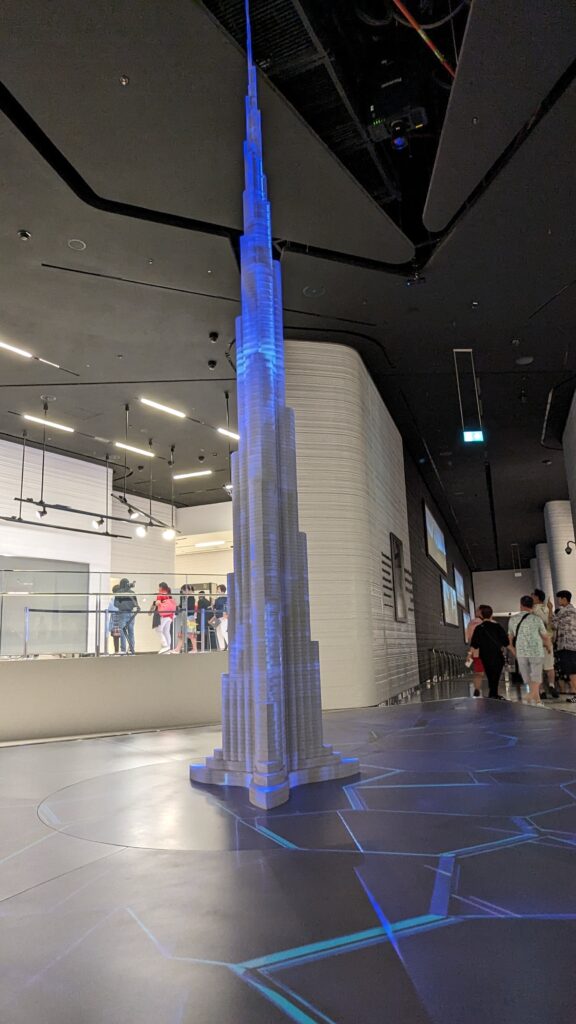
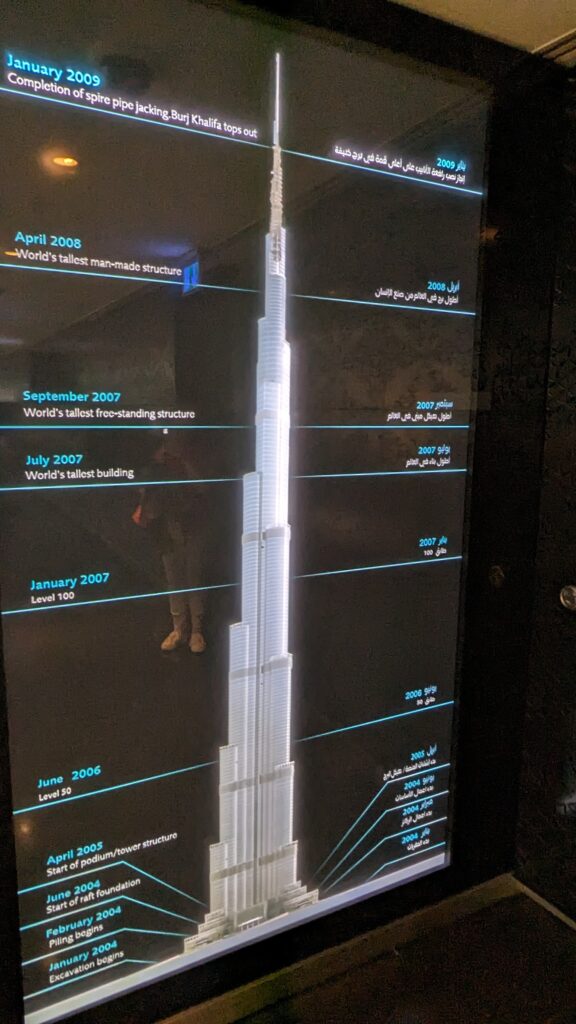
The inception of the Burj Khalifa was rooted in the vision of Dubai’s leaders, who sought to transform the city into a global hub of commerce, tourism, and culture. The driving force behind this ambitious project was Sheikh Mohammed bin Rashid Al Maktoum, Vice President and Prime Minister of the United Arab Emirates and Ruler of Dubai. He aimed not only to showcase Dubai’s prosperity but also to challenge conventional architectural norms and demonstrate the boundless possibilities of human imagination.
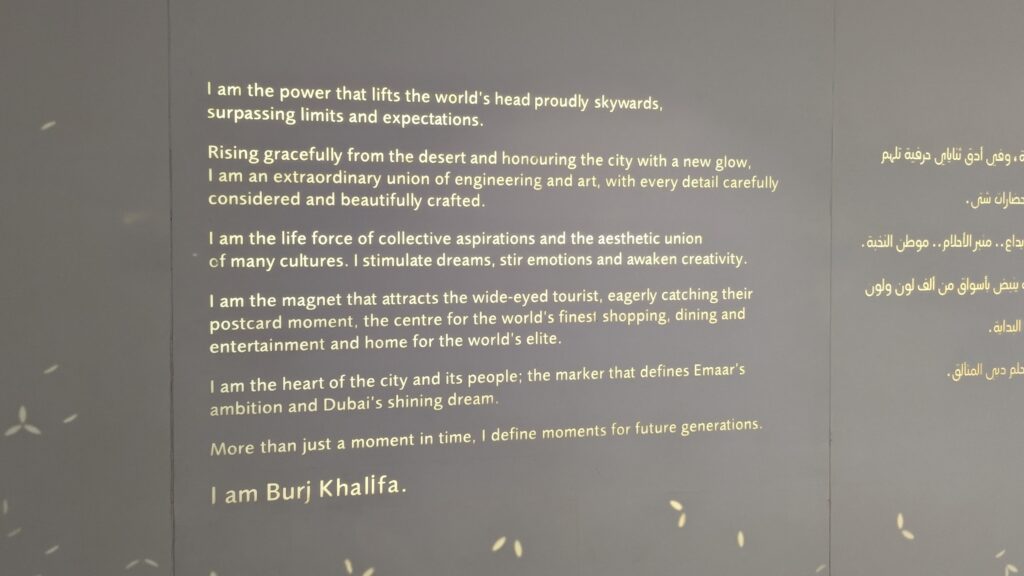
The Burj Khalifa was designed by the renowned architecture firm Skidmore, Owings & Merrill (SOM), led by architect Adrian Smith. The design drew inspiration from Islamic architecture and the patterns found in traditional Islamic art. Its sleek, modern silhouette combined with subtle cultural influences imbued the tower with a sense of identity that resonated deeply with both Dubai’s heritage and its aspirations for the future.
Construction: A Feat of Engineering
The construction of the Burj Khalifa was a complex endeavor that required innovative engineering solutions to overcome numerous challenges. One of the primary challenges was the extreme desert climate, with scorching temperatures that could reach up to 50°C (122°F). Additionally, the tower’s immense height posed unprecedented structural and logistical obstacles.
The construction process involved a combination of cutting-edge technology and meticulous planning. The tower’s foundation, comprising a massive reinforced concrete mat, was laid to provide stability and support for the towering structure. To counter the effects of Dubai’s shifting sands, engineers implemented a unique “top-down” construction approach, where the tower’s core was built first, and floors were added gradually while the exterior took shape simultaneously.

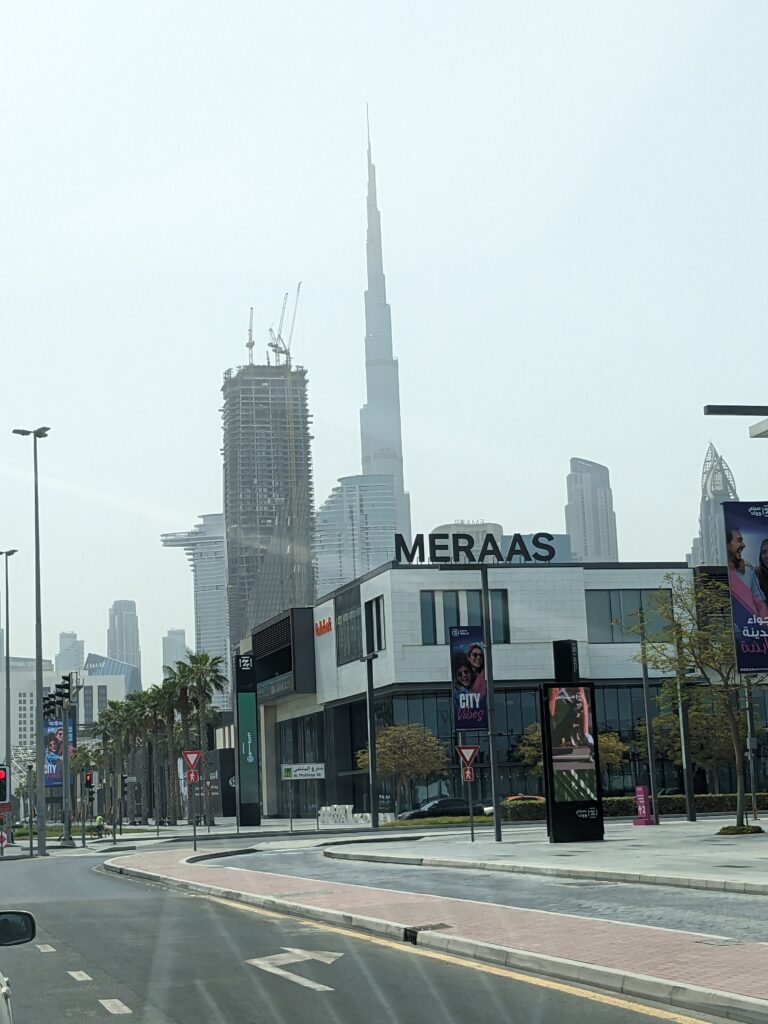
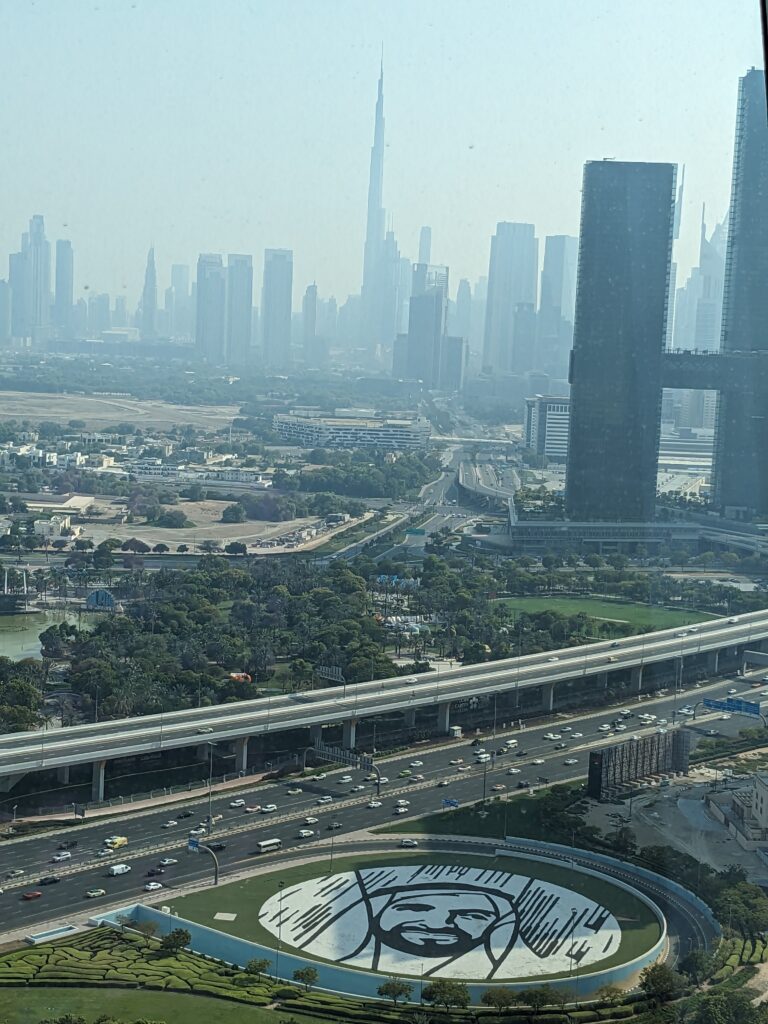
Another innovative feature was the use of a high-strength concrete mix designed to withstand both the extreme heat and immense weight of the tower. The Burj Khalifa’s distinctive tapering design not only served aesthetic purposes but also helped mitigate wind forces at higher altitudes.
Timeline: A Race Against Time
Construction of the Burj Khalifa commenced in 2004, and its grand opening was celebrated on January 4, 2010. The project took approximately 6 years, 2 months, and 14 days to complete. This rapid pace of construction was a remarkable achievement given the tower’s unprecedented height and the intricacies of the engineering involved.
Throughout the construction process, over 12,000 skilled workers from around the world collaborated to bring the Burj Khalifa to life. Their dedication and expertise were instrumental in ensuring the project’s success, as well as maintaining the highest safety standards amidst the complex and dynamic construction environment.
Upon arriving at the vibrant heart of Dubai, The Dubai Mall, I found myself standing at the threshold of a modern marvel. The anticipation was palpable as I approached the Burj Khalifa, an architectural giant that reached for the sky with unwavering confidence. It was a moment that resonated with the audacity of human ambition and the yearning to touch the clouds.
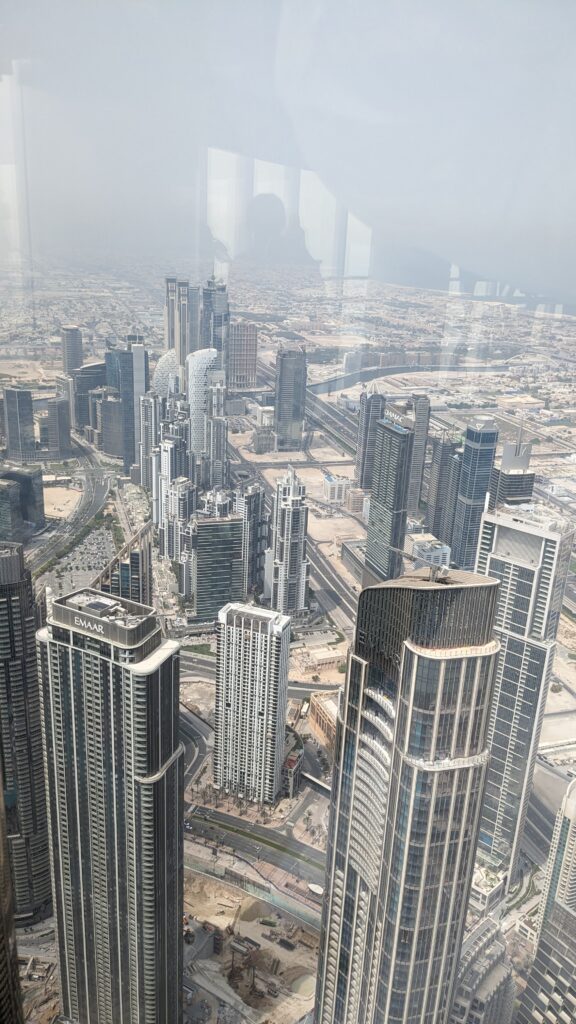
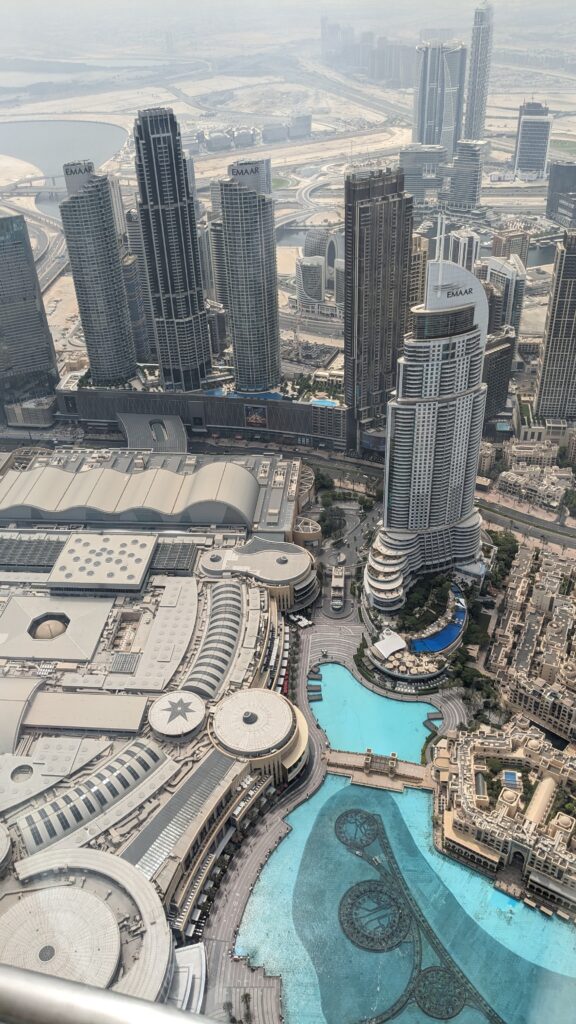
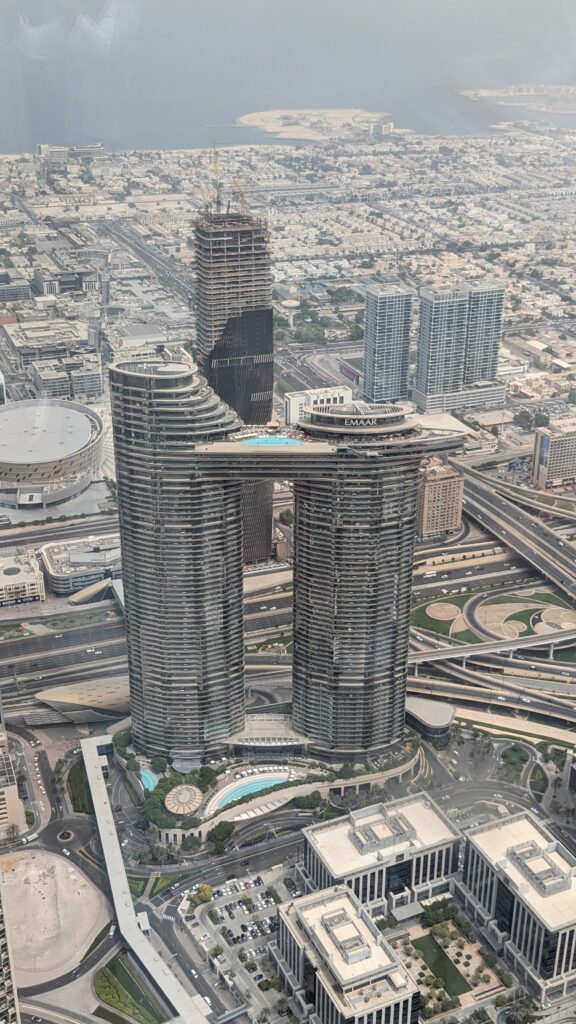
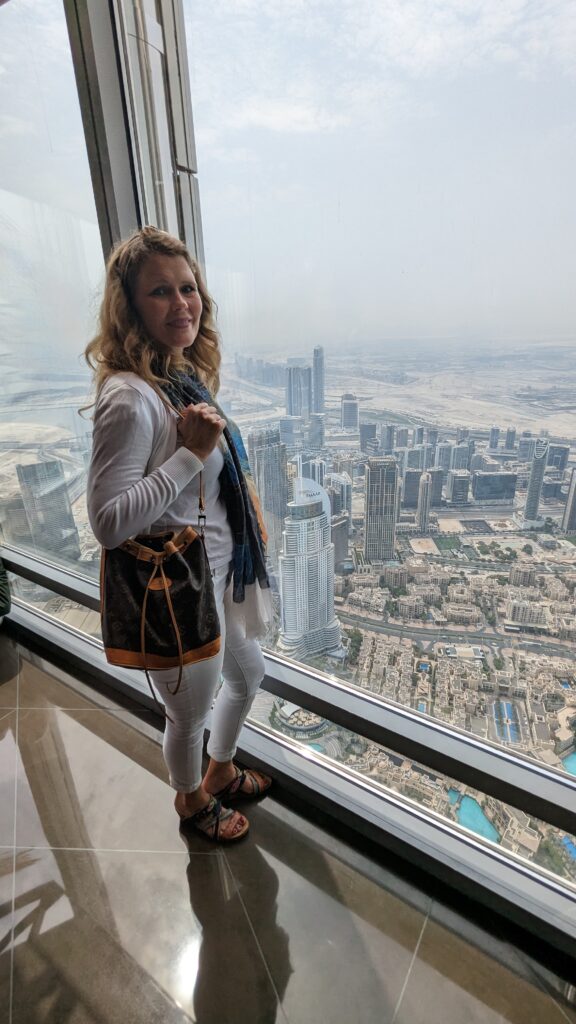
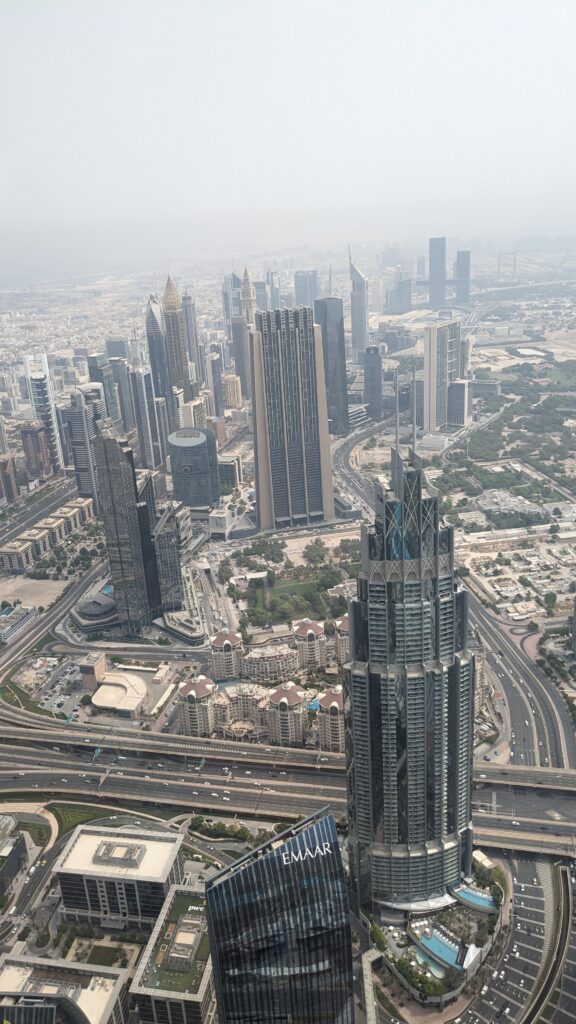
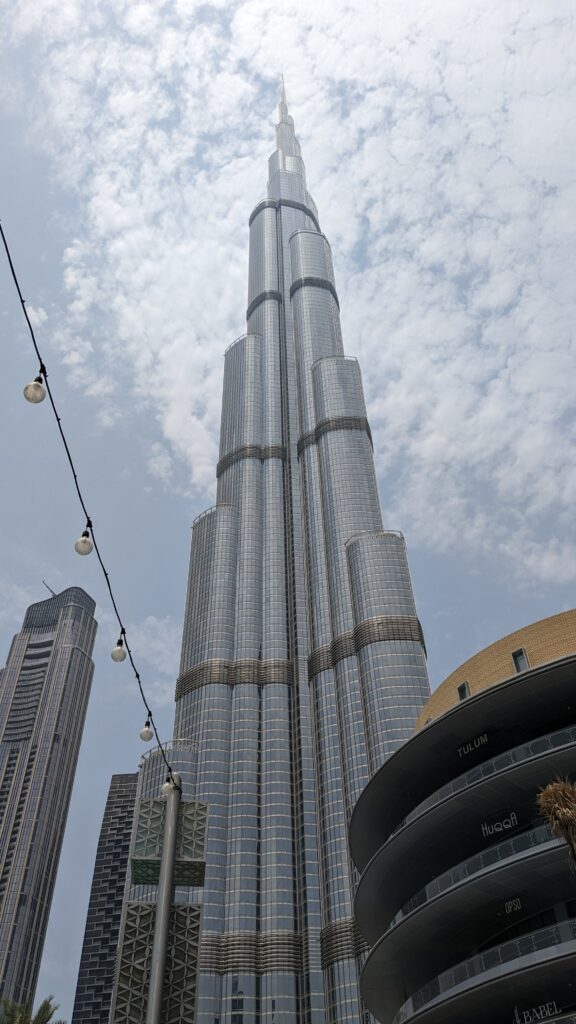
Entering the Burj Khalifa was a transition into a realm that transcended the ordinary. The lobby exuded elegance and modernity, with intricate designs that echoed the tower’s iconic shape. The atmosphere was charged with a sense of wonder, as if each visitor was about to embark on an unparalleled journey of discovery.
As I boarded the world’s fastest elevator, the excitement was tinged with a hint of awe. The ascent to the 124th floor, a staggering height, would take just 60 seconds—a journey that spanned decades of architectural innovation and engineering prowess. The sensation of speed was palpable, yet the smoothness of the ascent belied the technology that powered it.
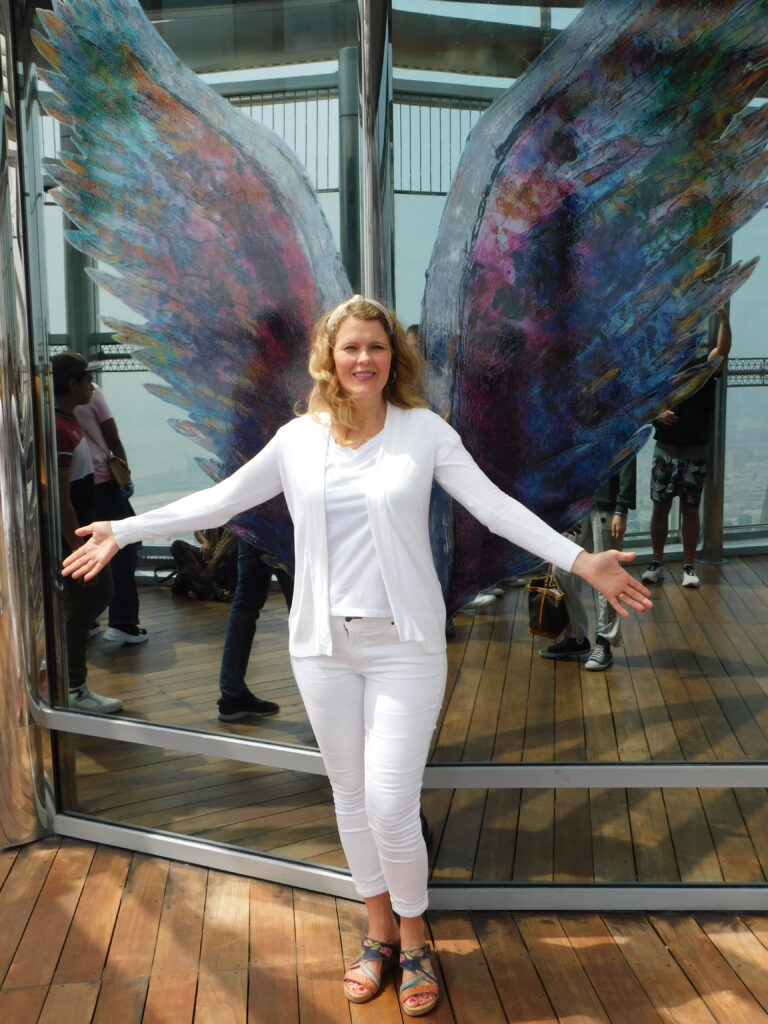
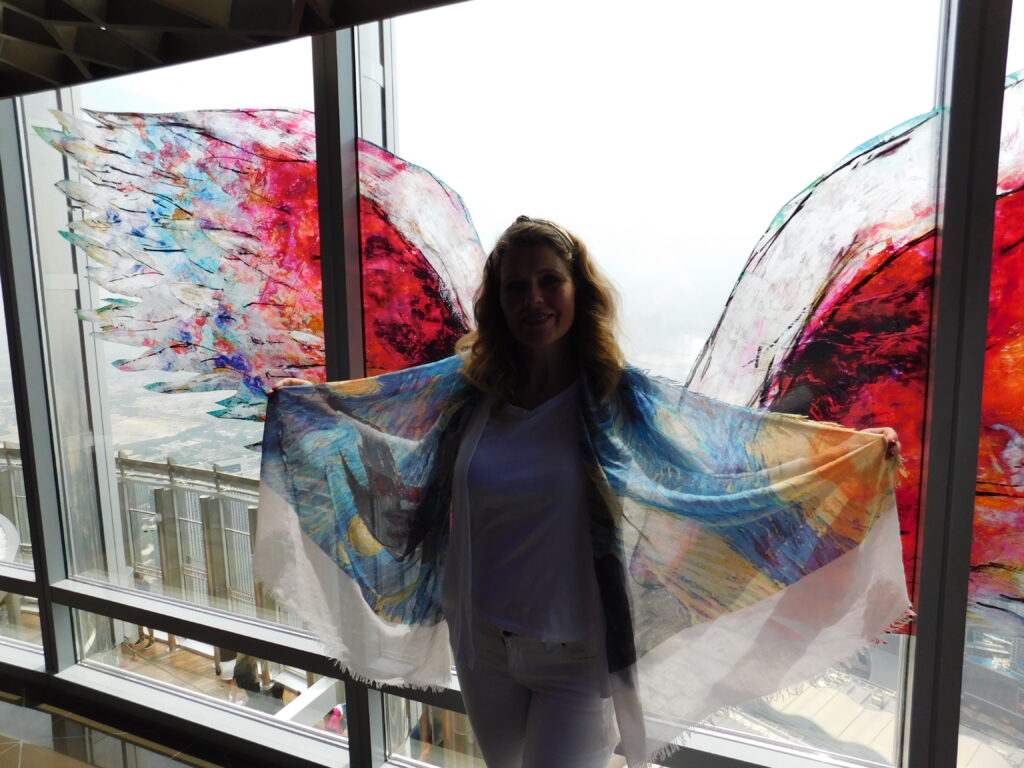
As I stepped foot into observation deck, I was greeted by a breathtaking panorama that extended far beyond my imagination. The view from above was nothing short of mesmerizing—a sprawling cityscape that merged modernity and tradition, desert and ocean, into an intricate tapestry. The towering skyscrapers that had once seemed colossal now appeared miniature in comparison to the vastness that stretched before me.
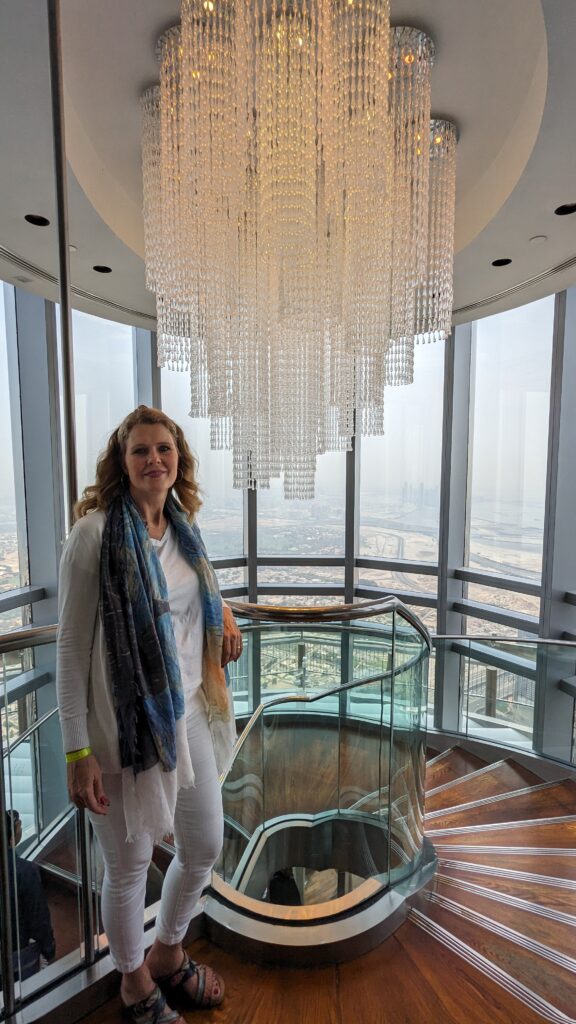
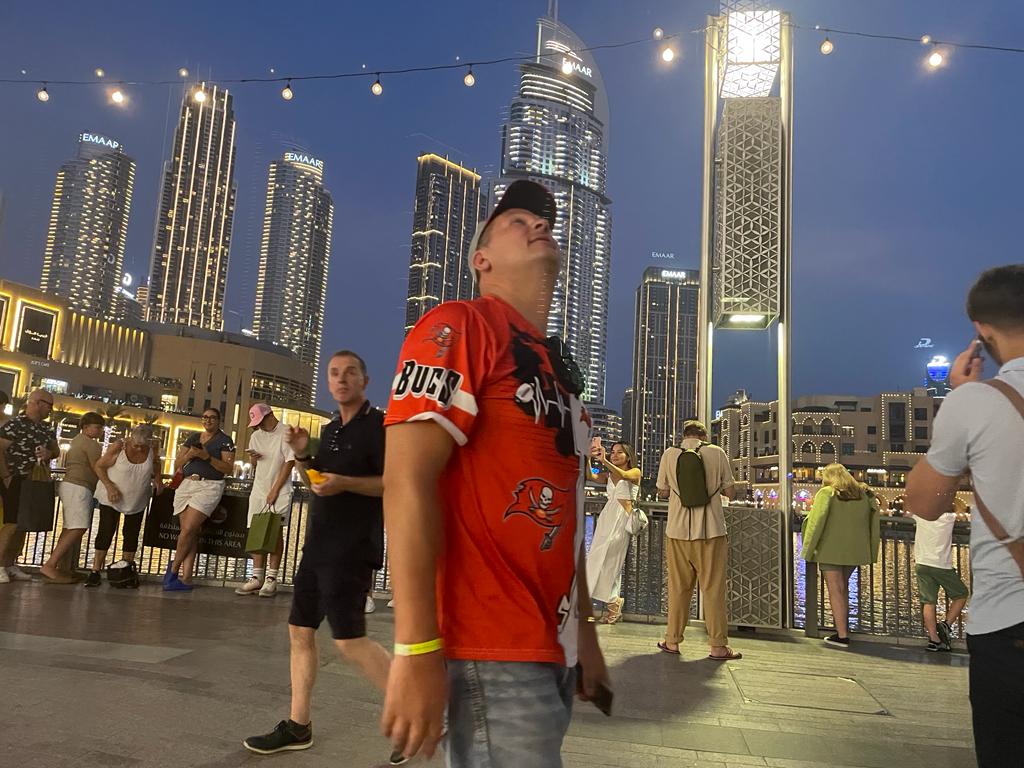
Dubai’s skyline, adorned with architectural gems and urban wonders, painted a portrait of a city unafraid to push boundaries. The geometric patterns of the Palm Jumeirah, the grace of the Dubai Marina, and the iconic sail-like structure of the Burj Al Arab—all were visible from this unparalleled vantage point. The city’s transformation from a desert landscape into a global hub of innovation was laid out like a story waiting to be explored.
The observation deck was designed with meticulous attention to detail, offering both indoor and outdoor areas to absorb the view. Stepping onto the open-air terrace, I felt a gentle breeze on my skin as I stood surrounded by the grandeur of Dubai. The heights were exhilarating, yet there was a sense of serenity in being above it all, away from the bustling streets and the cacophony of city life.
As the sun began its descent, casting a warm golden hue over the city, I marveled at the play of light and shadows on the urban landscape. The transition from day to night was a spectacle in itself, as the city transformed into a twinkling expanse of lights that rivaled the stars above.
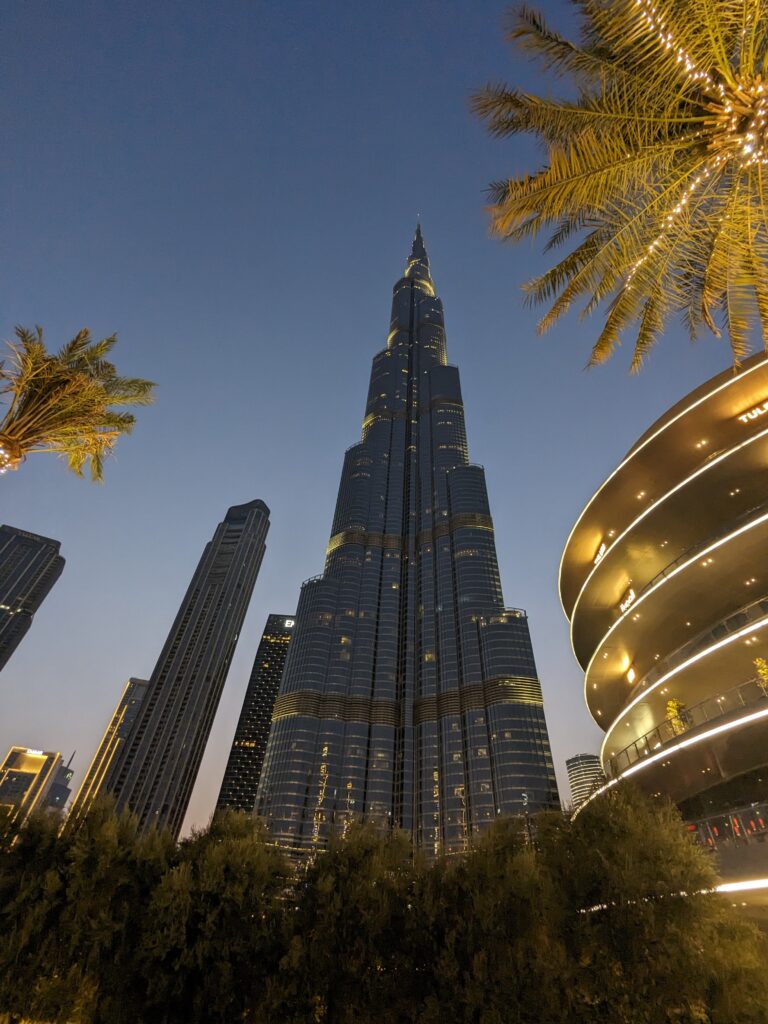
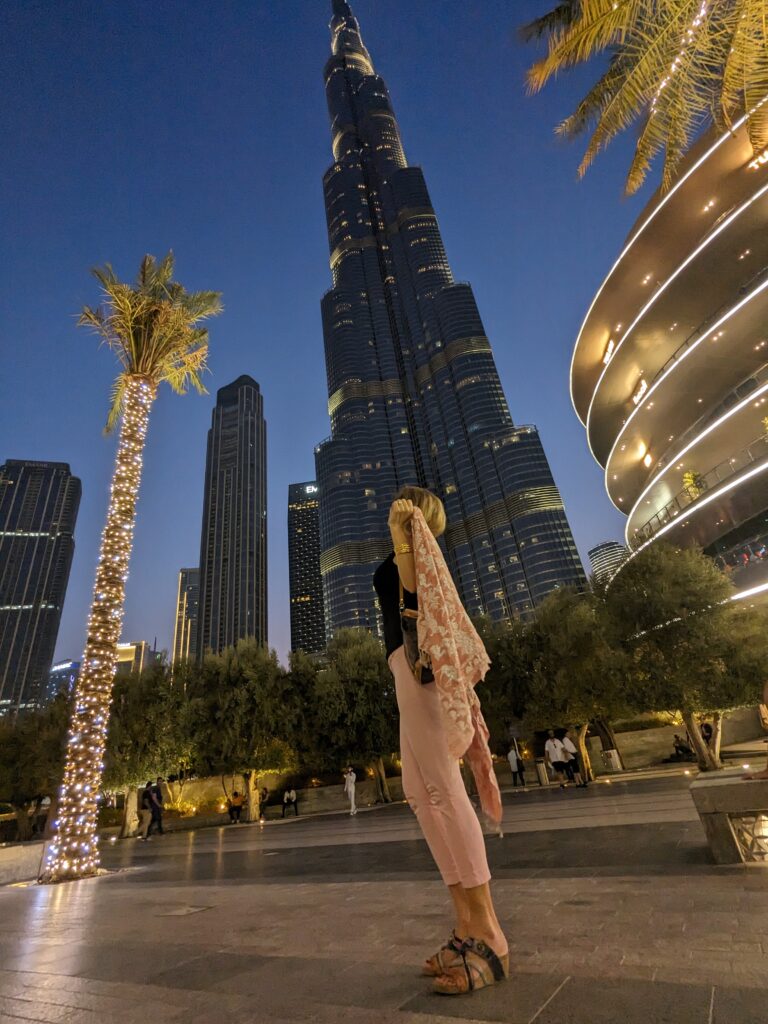
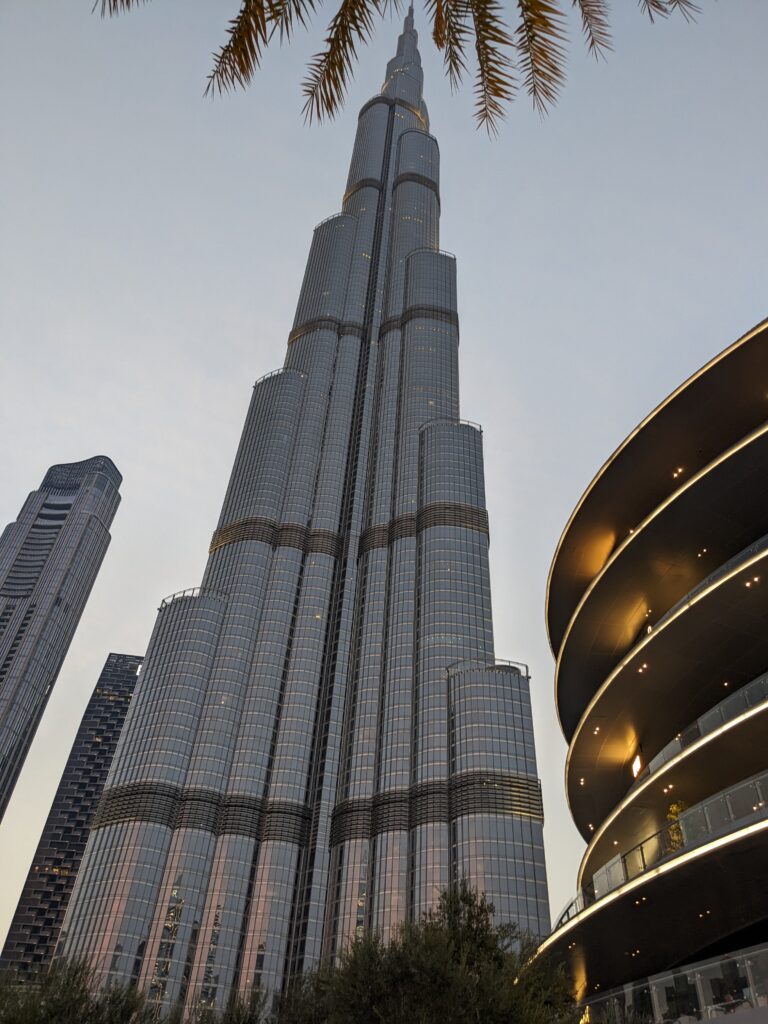
Leaving the Burj Khalifa’s observation deck was a journey in reverse, but it was also a departure with a newfound perspective. The experience was more than just witnessing a panoramic view; it was an encounter with human ambition, with the relentless pursuit of reaching new heights—both literally and metaphorically.
As I descended in the elevator, the memories of that breathtaking view remained etched in my mind. The Burj Khalifa was not merely a structure; it was a testament to the boundless potential of human creativity, an embodiment of Dubai’s spirit of progress and possibility. And as I stepped out of the tower, I carried with me not just an incredible memory, but a profound appreciation for the magnificence that can be achieved when dreams are turned into reality.
As the sun began its graceful descent below the horizon, casting a warm golden glow over the city, I found myself drawn to the foot of the Burj Khalifa once again. This time, it was to witness another spectacle that transformed the base of the towering structure into a realm of enchantment—the evening fountain show.

Positioned at the base of the Burj Khalifa, the Dubai Fountain stands as a harmonious fusion of art, water, and light. The anticipation in the air was palpable as the crowds gathered around, eagerly awaiting the magical performance that was about to unfold.
As twilight enveloped the city, the first notes of music resonated through the air, setting the stage for an experience that was as much auditory as it was visual. The Dubai Fountain’s synchronized dance with water jets, choreographed to the rhythm of the music, commenced with a burst of energy. The water seemed to come alive, soaring gracefully to the sky and cascading back down like liquid fireworks.
The interplay of water and light was nothing short of mesmerizing. As the water jets danced in perfect harmony, they caught the vibrant hues of lights that painted them with a kaleidoscope of colors. The result was a symphony of light and water that seemed to transcend the ordinary, captivating the senses and igniting a sense of wonder.
The fountain show was a tale told through movement—a tale that evolved with the changing melodies. It was a narrative that ranged from graceful serenity to exuberant exultation, mirroring the ebb and flow of emotions. The water jets swayed and twirled in delicate formations, evoking a sense of unity with the music that played in the background.
As the crescendo of the music built, the fountain’s performance reached its climax. The water jets soared higher, their silhouettes illuminated against the night sky. It was a moment of sheer grandeur, a testament to the precision of engineering and the artistry of design that brought this extraordinary spectacle to life.
The evening fountain show was not just a visual delight; it was an experience that spoke to the heart. It was a reminder that amidst the towering skyscrapers and modernity, Dubai had found a way to weave art and nature into its urban landscape. It was a celebration of beauty, an ode to creativity, and a gift to all those who gathered to witness its magic.
As the final notes of the music echoed into the night, and the last droplets of water gracefully descended, there was a collective sigh of appreciation from the audience. The applause that followed was a testament to the emotional impact that the fountain show had created.
Leaving the Burj Khalifa’s base that evening, I carried with me not just memories of a breathtaking fountain show, but a sense of awe for a city that had mastered the art of blending innovation and tradition. The Burj Khalifa and its accompanying fountain show were more than just landmarks; they were symbols of Dubai’s dedication to pushing boundaries and its commitment to creating experiences that touch the soul. But wait….
New Dubai Creek Tower is under construction RIGHT NOW!!!is The exact height of the Dubai Creek Tower has not been officially disclosed, However, there have been indications that the tower aims to surpass the Burj Khalifa, which stands at 828 meters (2,722 feet). Rumors and speculation suggest that the Dubai Creek Tower could potentially reach heights of around 1,300 meters (4,265 feet) or even more. It's important to note that these figures are subject to change based on the ongoing development and design considerations.
